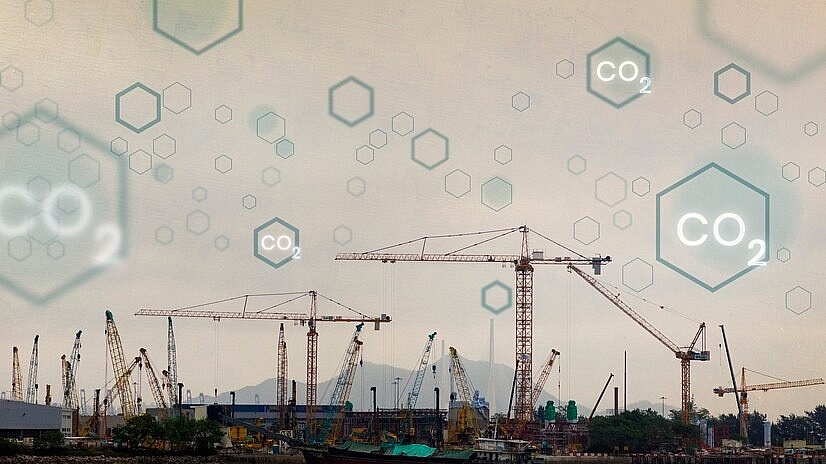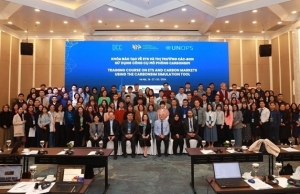Large emitters still to get to grips with carbon market
 |
| Large emitters still to get to grips with carbon market, illustration photo/ Source: freepik.com |
In the framework of a training course which was held two weeks ago in Hanoi on the emission trading system (ETS) and carbon market, Vietnam Energy and Environment Consultancy (VNEEC) released the survey results on awareness and readiness, as well as capacity-building needs for participation.
The survey was implemented on nearly 550 targeted installations with estimated emissions of above 10,000 tCO2e, which is a part of over 1,900 installations according to Decree No.06/2022/ND-CP on mitigation of greenhouse gas (GHG) emissions. The targeted installations focus on industry and trade, construction, waste treatment, and transport.
The survey indicated that just over two-thirds of surveyed firms have yet to conduct a GHG inventory. Meanwhile, more than half of firms that have already conducted GHG inventories hired a third party to do it.
In addition, 28 per cent of questioned companies already have GHG mitigation plans, while more than half stated that they are going to formulate such plans.
Just over half of responded firms stated that they had heard about the ETS and carbon market, but were not familiar with the basic principles. Only 1.3 per cent of companies shared that they clearly understand how the ETS and carbon market work, their differences, and their roles in carbon trading exchanges.
VNEEC co-founder Dang Hong Hanh said, “The survey results strongly suggest that the understanding of companies about the ETS and carbon market is limited, thus organising training courses for businesses is essential. However, it is good to know that almost all of the surveyed firms stated that they are willing to participate in the ETS.”
Limited understanding of ETS and carbon market can have certain impacts on businesses in developing emission reduction plans and conducting GHG inventories, Hanh explained.
“For the roadmap specified in Decree 06, the deadline is short. From 2024, targeted installations must conduct grassroots-level inventories and develop reports every two years. With current understanding, businesses may lack preparation and miss these milestones,” Hanh said.
If businesses do not raise awareness and start reporting, they may encounter difficulty maintaining and growing their reputation, especially in international markets, she added.
According to the roadmap of carbon market development in Vietnam, which is regulated in Decree 06, Vietnam will operate the carbon credit exchange mechanism on a pilot basis from 2025 and will officially start operation of the mechanism in 2028.
“The time until the pilot phase is short, and so it requires political determination and active participation from various stakeholders. It is also difficult to operate the ETS without sufficient databases of large emitters, with the first reporting deadline in March 2025,” Hanh said. “In addition, the carbon market is volatile, requiring flexible policies and continuous adjustment.”
Decree 06 prescribes three groups of participants of the national carbon market. The first group is the entities participating in the voluntary national crediting programme. The second group combines GHG-emitting installations subject to GHG inventory such as thermal power plants, freight transport companies, and commercial buildings with total annual fuel consumption of 1,000 TOE or more, in collaboration with solid waste treatment facilities with an annual operating capacity of 65,000 tonnes or more.
The third subject is other organisations and individuals involved in the investment and trading of emission allowances and carbon credits on the voluntary carbon market.
To catch up on the timeline to participate in the carbon market, enterprises are urged to develop GHG inventory preparation and reporting, ETS market activities, and a GHG mitigation plan for 2026-2030.
Roxanne Tan, finance and carbon market manager at climate-focused consultancy South Pole, said, “To prepare GHG inventory, businesses need to identify all inputs and outputs: fuel, feedstocks, products, and waste streams. They can refer to various information systems and documentation to conduct a stocktake of process units and equipment, and the manufacturing/industrial processes. It is necessary to identify measurement methods for activity data and conversion factors, such as the use of default emission factors.”
From 2025, businesses can craft an internal carbon pricing strategy to guide the company’s development of long-term decarbonisation strategy and investment strategy, continuous monitoring of developments in industry and policy, Tan added.
“From 2026, they should focus on the identification of emission reduction opportunities and cost-benefit analysis of mitigation measures. The following year, they can focus on the implementation and tracking of mitigation measures via planning for the deployment of mitigation measures based on the understanding of future ETS policy prices and government plans for the sector,” Tan said.
 | Vietnam seals major carbon credit deal, fetching $53 million Vietnam has successfully executed a landmark transaction, selling 10.3 million tonnes of CO2 emission credits to the World Bank for nearly VND1.25 trillion VND ($52.74 million), as confirmed by the Ministry of Agriculture and Rural Development to the prime minister on December 28. |
 | Training course sheds light on emission trading system, carbon market An ongoing training course on the emission trading system (ETS) and carbon market has gathered 145 participants from relevant state agencies, organisations, and enterprises, making the first capacity-building activity in Vietnam with participation from both public and private sectors. |
What the stars mean:
★ Poor ★ ★ Promising ★★★ Good ★★★★ Very good ★★★★★ Exceptional
 Tag:
Tag:
Related Contents
Latest News
More News
- Businesses ramp up production as year-end orders surge (December 30, 2025 | 10:05)
- Vietjet chairwoman awarded Labour Hero title (December 29, 2025 | 13:06)
- How to unlock ESG value through green innovation (December 29, 2025 | 10:03)
- AI reshapes media and advertising industry (December 29, 2025 | 08:33)
- FPT and GELEX sign deal to develop blockchain tech for global markets (December 29, 2025 | 08:29)
- Vietnam’s GDP forecast to grow by 9 per cent in 2026 (December 29, 2025 | 08:29)
- Women entrepreneurs are key to Vietnam’s economic growth (December 29, 2025 | 08:00)
- Vietnam's top 500 value-creating enterprises announced (December 27, 2025 | 08:00)
- The PAN Group shaping a better future with ESG strategy (December 26, 2025 | 09:00)
- Masan Consumer officially lists on HSX, marking the next phase of value creation (December 25, 2025 | 13:20)






















 Mobile Version
Mobile Version